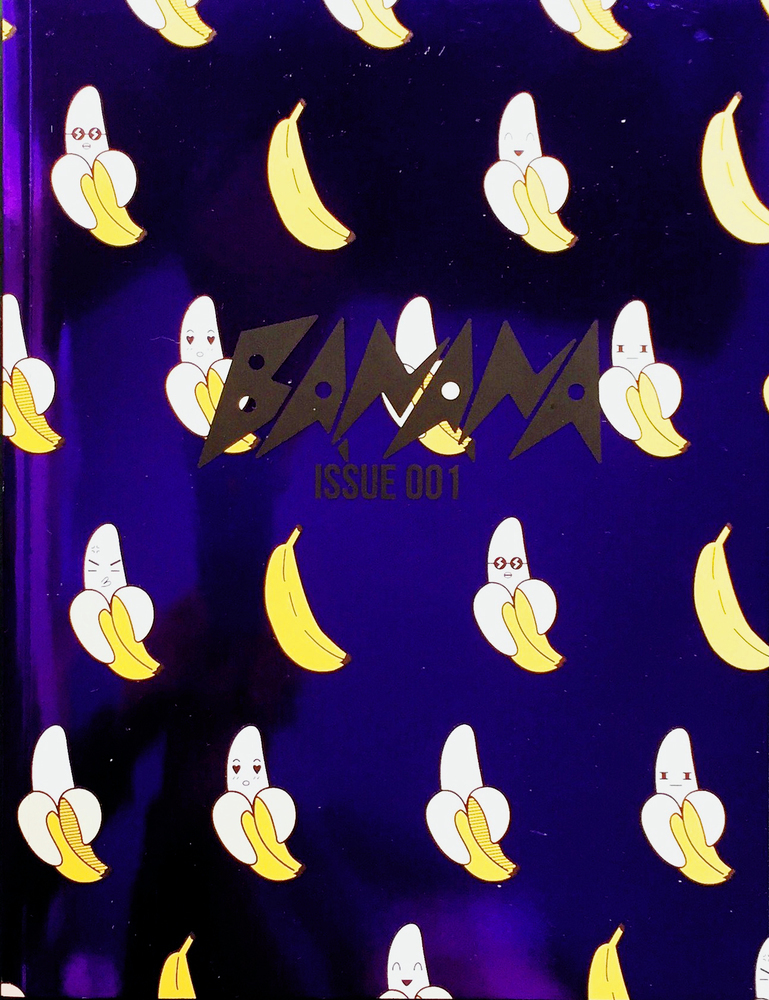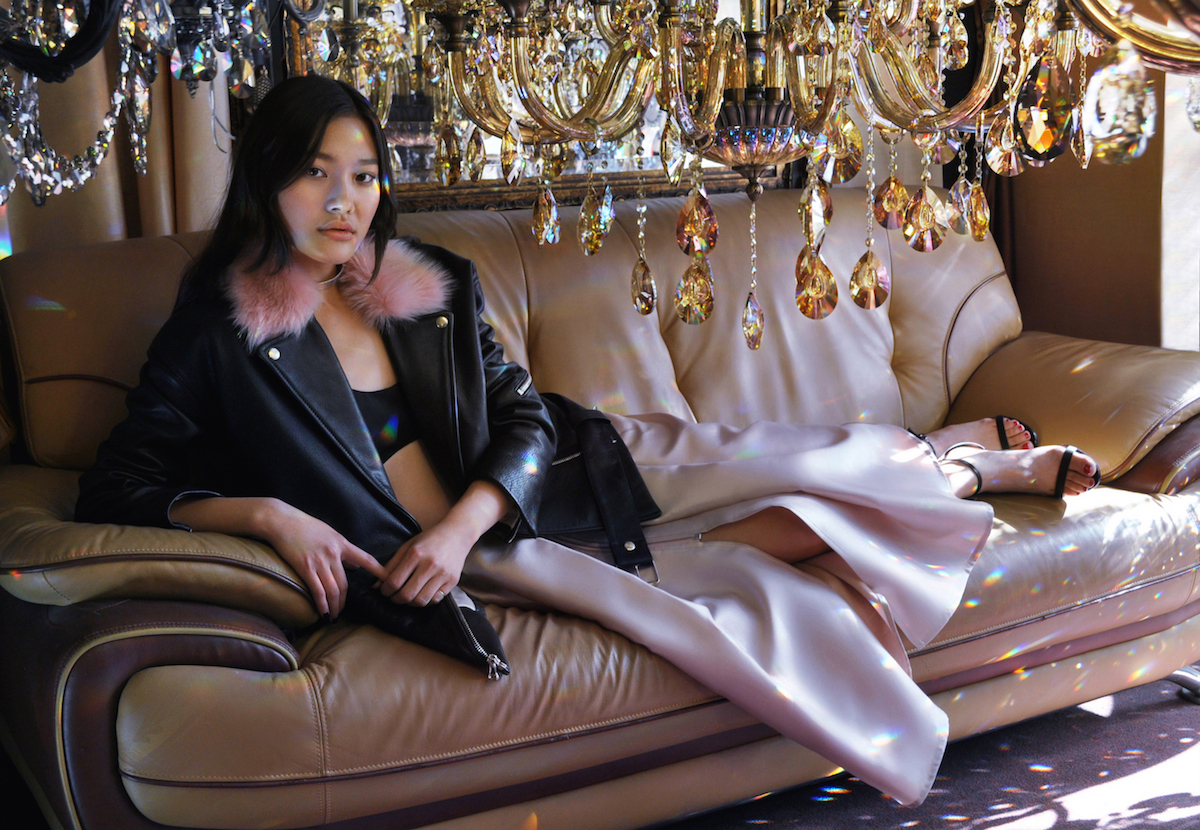Growing up, Vicki Ho and Kathleen Tso didn’t have many celebrity role models that shared their racial identity. “Kaity Tong, the anchor from old school WB11 evening news. She was bae. Literally the only Asian on TV,” says Vicky. And, when Asians did get leading roles, they often played stereotypical nerds or exaggerated caricatures of their culture. The failure of Margaret Cho’s 1994 sitcom All American Girl to appeal to a broad American audience left a void of Asian-American representation in the media that ultimately drove Vicky and Kathleen to distance themselves from their Asian heritage. Though New York City and suburban Texas – where the girls lived as kids – are worlds away, Vicki and Kathleen’s similar experiences led them to create Banana, a magazine that focuses on that focuses on being Asian and growing up in millennial America.
The release of Banana’s second issue this winter coincides with a breakthrough moment for Asian-Americans in popular culture. Aziz Ansari’s sitcom, Master of None, just hit Netflix and Eddie Huang’s loved/hated Fresh off the Boat began its second season early this fall. The magazine serves the dual purpose of featuring Asian artists, chefs, actors and designers, and also creating a community of creative Asians. Banana is a place to embrace, appreciate, and celebrate, in Kathleen’s words, “bomb-ass Asians.”

Photography Will Yan
How do you choose your subjects and contributors?
Kathleen Tso: We’ve had the luxury of a lot of these subjects coming to us. Since the community is equally as passionate as we are, we get amazing pitches all the time. We also reach out to people who are personally inspiring to us as well.
Vicki Ho: What’s special about Banana is that it showcases a slice of life that no one really sees in the Asian community — the creative class. So whether it’s who we profile or who contributes to the magazine, we look for talent that will help push this class into the limelight.
Who have you been most excited to feature?
KT: My mom! Stay tuned for issue two.
VH: Wilson Tang, the founder of Nom Wah Tea Parlor in NYC’s Chinatown, whom we profile in issue two. He’s a straight-up boss.

Photography Trinh Huynh
How represented (or not) are Asians in the media right now? And how is that changing, if at all?
KT: It’s pretty obvious that we’re not fully present in the media now. However, with shows like Fresh Off The Boat and now Aziz Ansari’s Master of None, we’re making progress.
VH: There’s progress. There are definitely more Asians in the media to look up to now than when we were growing up. The biggest change I see is that Asians who have a place in media don’t need to stick to stereotypes anymore; they can be themselves and their opinions and talent are respected across the board.

Photography Trinh Huynh
There were more models of color on the runway during this most recent New York Fashion Week than in past seasons — how represented do you feel Asian models are in fashion?
VH: I work in the fashion industry so, sure, I see better representation than before. I think runway shows like Made and V Files help push the envelope because they are so full of diversity and different perspectives. But on a national scale and on a consumer level? There’s a hell of a long way to go.
What can we expect from the second issue?
KT: A redesign, more thoughtful content and another fun cover! This may be a little biased, but my favorite feature was written by my sister. It’s about non-Asians hitting on Asian girls. It’s going to be accompanied by a comic illustrated by Louie Chin. It’s hilarious and way too true.
VH: I’m super psyched about our feature on fashion designer Sandy Liang. The images and collection are stunning, and the profile isn’t the typical “what’s your fall inspiration?” story. It’s about Sandy as a person, and as a first-generation Asian-American in this industry.

Photography Trinh Huynh
As first-generation Asian-Americans yourselves, how did you relate to your classmates growing up?
KT: I grew up in a predominantly white suburb in Texas so it was a challenge to relate to my peers. It’s sad but I attempted to shed ties with Chinese culture and focused on American culture to fit in as much as possible. I hated being different. I remember wishing that my name was “Katie Smith,” so I could just blend in. Or I wished that I had been raised in Taiwan (where my parents grew up) so I could feel “normal.” It bums me out that I had these thoughts.
VH: I had a different experience growing up but somehow came to the same struggles as Kathleen. I was raised in Brooklyn in a predominantly Asian community but all I wanted was to stand out from my peers. I also wanted to shed my Chinese culture at one point. I’m super pale and remember I used to lie to people that I was half white so that I could stand out and be “American.”
It was these stories of growing up that brought Kathleen and I together to create Banana. We were both so confused about accepting our culture growing up and only now as adults have we become truly appreciative and proud of it. Hopefully Banana can help other Asians come to this conclusion way quicker than we did.
You can pre-order the second issue here.

Credits
Text Hana Beach
Images courtesy Banana
Lede Image:
Photographer: Rebekah Seok
Stylist: Beverly Nguyen
MUA: Seiya Iibuchi
Hair: Shuhei Kadowaki
Model: Gia Seo
